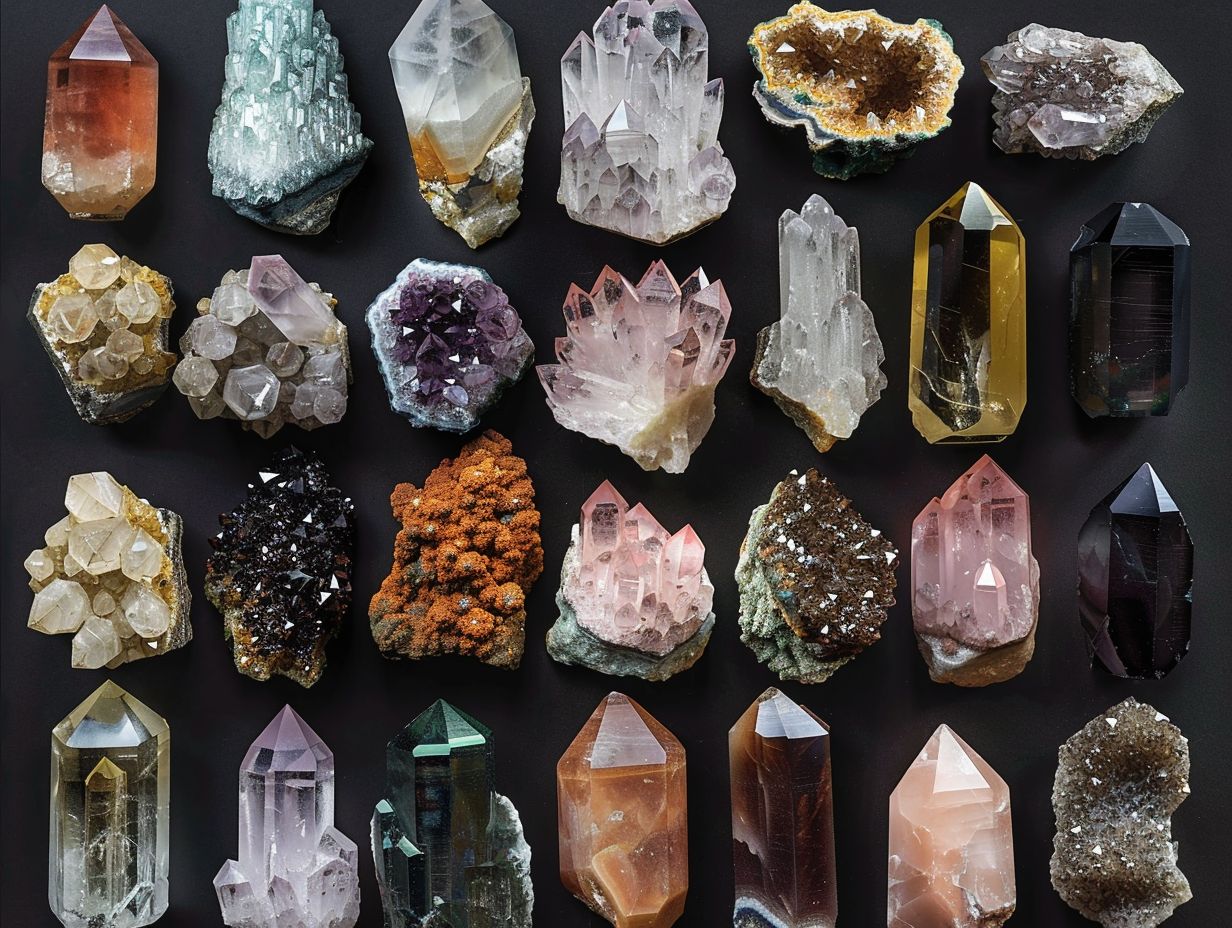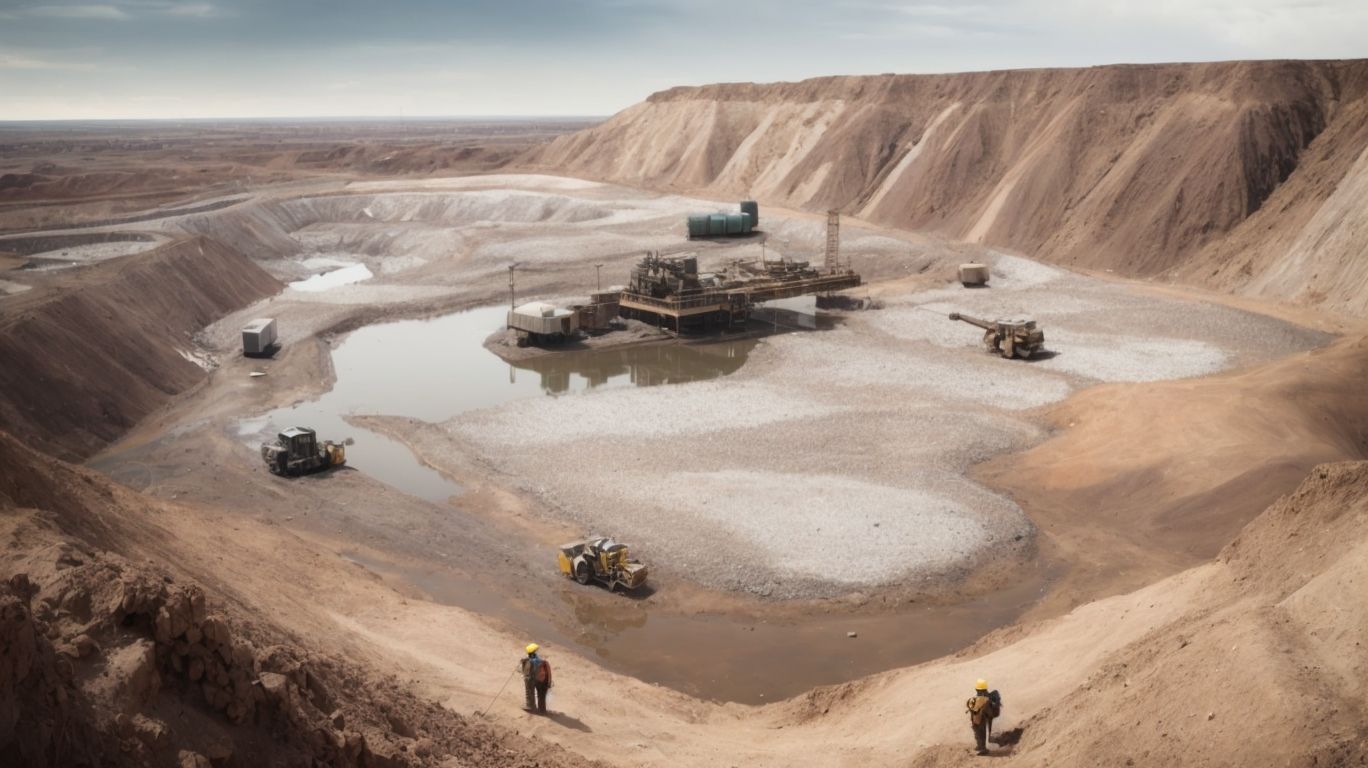
Unearthing Beauty: An Inside Look at Crystal Excavation
Have you ever wondered about the fascinating world of crystal excavation?
In this article, we will explore the wonders of crystals – from their formation deep within the earth to the popular excavation sites where you can unearth these natural treasures.
We’ll also discuss how to prepare for a crystal excavation trip, the process of locating and extracting crystals, and the various benefits that come from this unique and rewarding experience.
Join us as we delve into the beauty of crystal excavation.
What is Crystal Excavation?
Crystal Excavation involves the exploration and extraction of gems and minerals from deep within the Earth, revealing geological wonders and dazzling discoveries.
Delving into the depths of the Earth’s crust, crystal excavation is a thrilling quest that allows one to unearth hidden treasures and sparkling crystals formed over centuries.
As excavators carefully chip away at the rock, the anticipation of discovering a rare gem intensifies with each crack. The process requires precision and patience as each layer holds the potential for a brilliant find. The sight of a crystal nestled within the rough terrain is a rewarding sight that showcases the beauty and magic of these natural formations.
What Are Crystals?
Crystals are naturally occurring solid substances with a unique molecular structure, formed through the intricate process of crystal formation, showcasing the beauty of Earth’s natural wonders.
Their distinctive geometric shapes result from the repeated pattern of atoms or molecules binding together in a highly ordered manner. The formation of crystals occurs over extended periods, often influenced by factors like temperature, pressure, and the presence of specific elements. These exquisite formations, from sparkling quartz to shimmering diamonds, stand as a testament to the geological marvels that shape our planet.
Scientists study crystallography to understand these structures, unlocking insights into the history of Earth and the processes that shape its diverse landscapes.
How Are Crystals Formed?
Crystals are formed through a process called crystal growth, influenced by various factors in Earth science, resulting in distinct crystal patterns that define their structure and properties.
The intricate process of crystal growth involves the arrangement of atoms or molecules in a repeating pattern to form a crystalline lattice. This process is guided by various Earth science elements such as temperature, pressure, and chemical composition. These factors impact the rate at which crystals form and the overall quality of the crystal structure.
Crystallography studies reveal the symmetry and arrangement of atoms within crystals, highlighting the unique atomic arrangements that contribute to different crystal properties such as transparency, hardness, and color. Understanding these mechanisms is vital in crystal chemistry for applications in various fields.
Where Can You Find Crystal Excavation Sites?
Crystal excavation sites are scattered across the globe, waiting to be uncovered through geological surveys and mining operations, offering gem enthusiasts a glimpse into Earth’s hidden treasures.
These sites hold the promise of unearthing rare and breathtaking crystals that have been forming deep within the Earth’s crust for centuries. From the vibrant hues of amethyst in Brazil to the stunning clarity of quartz in Arkansas, each location tells a unique geological story through the precious gemstones it yields.
The meticulous process of extracting these crystals requires a delicate balance of precision and expertise, ensuring that each find is preserved and showcased in its natural beauty. Mining activities at these sites are not just about extraction; they are also a journey of discovery into the intricate workings of Earth’s geological makeup.
What Are the Most Popular Crystal Excavation Sites?
Some of the most popular crystal excavation sites around the world are renowned for their geological marvels and abundant mineral specimens, attracting gem enthusiasts and geological enthusiasts alike.
- One such notable site is the Emerald Hollow Mine in North Carolina, known for its stunning emerald and aquamarine deposits.
- The Crystal Cave in Mexico is a must-visit for those interested in giant crystal clusters, with some reaching up to 36 feet in length!
- The Herkimer Diamond Mines in New York offer visitors the chance to find uniquely double-terminated quartz crystals.
- Other famous locations include the Mount Ida Crystal Mines in Arkansas, the Namibian desert for rare gemstones, and the Crystal Peak Mine in Colorado, where smoky quartz and amazonite can be unearthed.
What Are the Different Types of Crystals Found in Excavation Sites?
Excavation sites yield a diverse range of crystals, from precious gemstones to rare mineral specimens, showcasing the Earth’s breathtaking variety and offering insights into the world of crystallography.
These excavated crystals provide a window into the geological history of different regions, with each crystal revealing unique patterns and structures that aid scientists in understanding mineral formation processes.
Gemstones like diamonds, emeralds, and sapphires represent the pinnacle of craftsmanship, coveted for their beauty and rarity. On the other hand, minerals such as pyrite, quartz, and fluorite offer valuable insights into crystallography, helping researchers classify and identify minerals based on their distinctive properties and crystal structures.
How Do You Prepare for a Crystal Excavation Trip?
Preparing for a crystal excavation trip involves gathering essential supplies and understanding the necessary safety precautions to ensure a successful and secure exploration of hidden crystal treasures.
Among the key supplies needed are sturdy hiking boots, protective gloves, a digging tool such as a trowel or small shovel, a backpack with water and snacks, a first aid kit, and a headlamp or flashlight for visibility in dark caves or mines. It is crucial to dress appropriately for the terrain, ensuring proper footwear and clothing for comfort and protection.
Bring along a journal or notebook to log findings and a map of the excavation site for navigation. Prioritize safety by checking the weather forecast, informing others of your itinerary, and adhering to any site-specific rules or guidelines.
Remember to practice ethical collecting by respecting the environment and following local regulations. Before and after handling any crystals, utilize cleansing methods like smudging with sage or placing them under moonlight to remove any potential negative energies. By being well-prepared and cautious, you can enjoy a rewarding and safe crystal excavation experience.
What Supplies Do You Need?
Key supplies for a crystal excavation trip include tools for excavation, protective gear, and materials for gemstone sourcing, ensuring that enthusiasts are well-equipped for their mineral exploration journey.
- Among the essential tools for excavation, a rock hammer plays a crucial role in breaking apart rocks to reveal hidden crystals.
- A chisel is handy for precision work, allowing enthusiasts to extract delicate specimens without causing damage.
- A sturdy pickaxe proves invaluable for loosening stubborn rocks and navigating challenging terrain.
Protective gear such as safety glasses and gloves shield rock hounds from potential hazards while preserving the integrity of collected gemstones.
Materials for gemstone sourcing, like magnifying lenses and storage containers, aid in examining and safely transporting precious finds.
What Safety Precautions Should You Take?
Prior to embarking on a crystal excavation trip, it is crucial to implement safety precautions such as wearing protective gear, staying hydrated, and being mindful of potential hazards to ensure a safe and enjoyable experience, free from harm.
- Protective clothing plays a vital role in safeguarding against cuts, scrapes, and exposure to rough terrain. Ensuring you have sturdy footwear, gloves, and long-sleeved clothing can prevent injuries.
- Hydration is key in maintaining energy levels during the physical demands of excavation. Carrying ample water and electrolyte-rich drinks is essential.
- Being aware of geological risks like unstable cliffs and loose rocks is crucial. Understanding the surroundings and following safety guidelines leads to a mindful and enriching crystal excavation experience.
What is the Process of Crystal Excavation?
The process of crystal excavation involves meticulous digging, careful extraction techniques, and sometimes gem cutting to reveal the true beauty and potential of the unearthed minerals.
- To begin the process, mineral deposits are first located underground through geological surveys and exploration.
- Once a promising site is identified, excavation crews use specialized tools such as drills, shovels, and chisels to carefully unearth the crystals without causing damage.
- The extracted crystals are then cleaned and examined to assess their quality and determine the best approach for gem cutting.
- Master gem cutters analyze the gems’ natural shape and properties before crafting intricate cuts that enhance both their value and aesthetics, turning raw minerals into stunning gemstones for various settings.
How Do You Locate Crystals?
Locating crystals during an excavation requires a keen eye for geological formations, the expertise of a crystallographer, and a deep understanding of the earth’s mineral structures to pinpoint the hidden treasures beneath the surface.
A crystallographer’s role in this process is crucial, as their knowledge of crystal structures enables them to distinguish between various minerals and identify the unique signatures that indicate the presence of crystals.
The study of crystal vibrations also plays a significant role, as different crystals exhibit distinct vibrational patterns that can aid in the detection of potential crystal deposits. By combining geological expertise with crystallographic knowledge and an awareness of crystal vibrations, excavators can effectively locate and extract these precious gemstones from the depths of the earth.
What Tools Are Used for Excavation?
Excavating crystals requires a specialized set of tools, including picks, shovels, and brushes, to carefully unearth the delicate specimens while following precise crystallographic directions to preserve their natural beauty and integrity.
These tools play a crucial role in excavation activities, offering precision and control during the extraction process. Picks are essential for loosening soil and rocks around the crystals without causing damage, while shovels help in safely lifting the unearthed specimens. Brushes, on the other hand, are used for meticulous cleaning to reveal the crystal’s true form. By adhering to crystallographic directions, excavators ensure that the crystals’ lattice structure remains intact, maintaining their unique crystallographic forms for further study and appreciation.
How Do You Extract Crystals from the Earth?
Extracting crystals from the earth involves precision mining techniques, historical excavation methods, and a deep respect for the gemstone history embedded within the layers of the earth, unveiling the timeless beauty hidden beneath the surface.
Through traditional mining practices passed down through generations, miners carefully navigate through layers of rock and soil to uncover precious gemstones. These gems, formed over millions of years, hold a cultural significance that dates back centuries, with each stone telling a story of its own.
The extraction process is not merely about obtaining gems; it is a harmonious dance between nature and human craftsmanship, honoring the geological processes that create these marvels. Gemstone enhancements, such as cutting and polishing, further reveal the inner brilliance and unique characteristics of each crystal, enhancing its overall allure.
What Are the Benefits of Crystal Excavation?
Crystal excavation offers a multitude of benefits, ranging from physical and mental well-being to spiritual enlightenment and the opportunity to partake in crystal healing rituals, enriching the mind, body, and soul.
Exploring the positive impacts of crystal excavation on physical health, individuals often experience an increase in energy levels, improved vitality, and a strengthened immune system.
Mentally, engaging in crystal digging can promote clarity, focus, and emotional balance. From a spiritual perspective, the act of uncovering crystals from the earth connects individuals to the natural world and fosters a deeper sense of connection to the universe.
The practice of crystal programming and alignment further enhances these benefits, allowing individuals to tap into the transformative power of crystal energy for holistic wellness.
Physical and Mental Health Benefits
Engaging in crystal excavation can have profound physical health benefits, promoting relaxation, stress relief, and overall well-being, while also nurturing mental wellness through activities like crystal divination that foster inner peace and clarity.
Exploring the depths of crystal excavation not only benefits the body but also allows the mind to achieve a state of tranquility and mental balance. Through the process of connecting with crystals and harnessing their energy, individuals often discover a sense of calmness that can alleviate symptoms of anxiety and tension.
Crystal divination, a practice rooted in ancient traditions, provides spiritual guidance and insight, aiding in mental clarity and introspection. The growth and formation of crystals symbolize the path towards personal growth and enlightenment, offering a holistic approach to overall well-being.
Spiritual and Emotional Benefits
Crystal excavation can lead to profound spiritual growth, enhancing emotional well-being, and fostering a deep sense of connection with the Earth through practices like crystal attunement that align the spirit with the natural energies of the crystals.
This intentional alignment with the vibrational frequencies of different crystals can have a profound impact on individuals, aiding them in finding emotional balance and inner peace. By tapping into the unique energies of various crystals, one can invite transformative experiences that stimulate personal growth and facilitate spiritual connections. The process of crystal excavation allows individuals to attune themselves to the Earth’s energies, creating a harmonious relationship that enhances overall well-being and strengthens the energy field surrounding them.
Educational and Cultural Benefits
Participating in crystal excavation offers valuable educational insights into geology, mineralogy, and the cultural significance of gemstones, providing a deeper understanding of Earth’s treasures and the symbolic meanings behind each precious stone.
Exploring the geological processes involved in the formation of crystals during excavation not only enhances one’s knowledge of Earth’s natural history but also helps in appreciating the various gemstone properties.
Delving into the cultural importance of gemstones can unveil traditions, beliefs, and rituals associated with different stones, reflecting how these precious gems have been revered by different civilizations throughout history.
Understanding the symbolic meanings linked to gemstones adds another layer of fascination, as each stone carries its own unique energy and historical significance.




No Comments